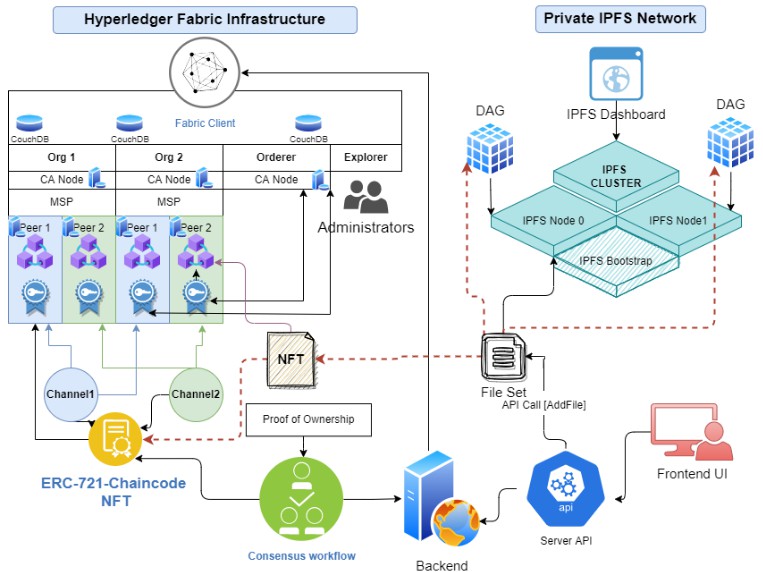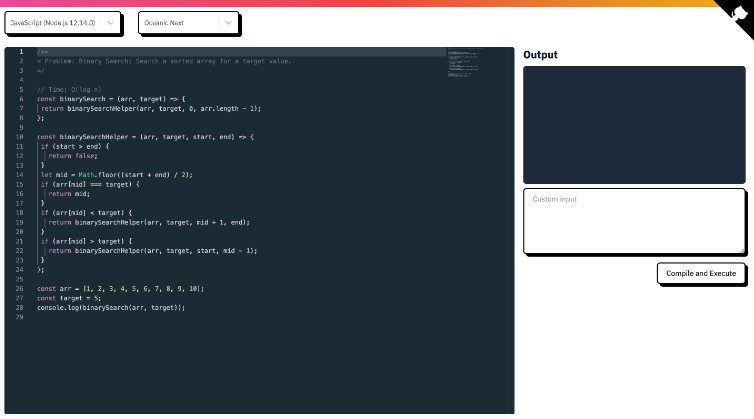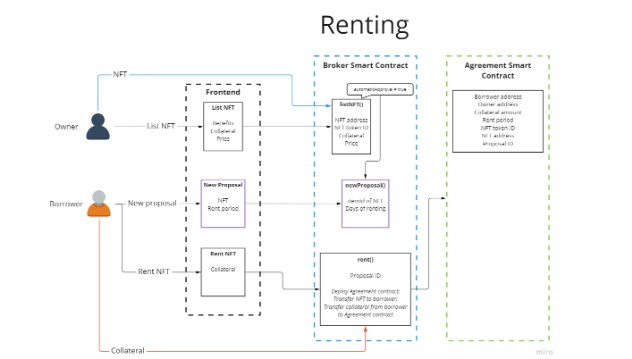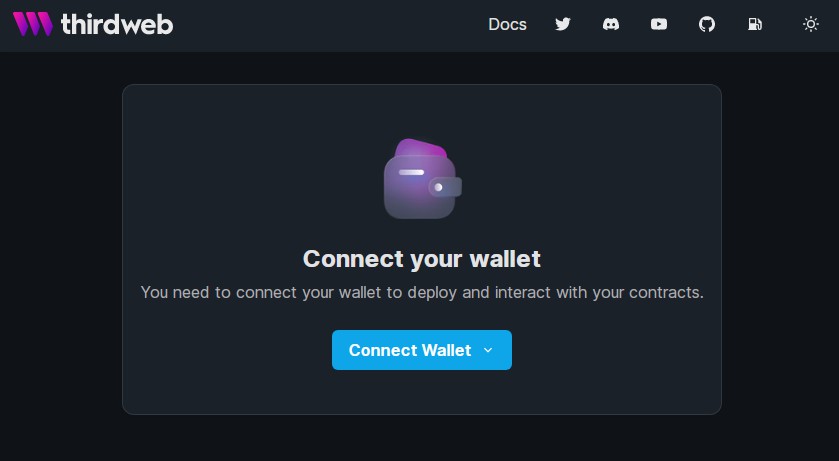NFT as a proof of Digital
Ownership-reward system integrated to a Secure Distributed Computing system Managed by Blockchain
Summary
This is a Thesis project for my masters degree in Data Science provided by University of Stavanger. The purpose of this work is to demonstrate the feasibility and potential to implement an NFT-Based system to store and manage ownership of data, contribute to the newtork and use Proof of Ownership as the consensus mechanism.
A permissioned Blockchain-based network
The project simulates the interaction between two organization in a permissioned blockchain network where they can:
- Upload a data file system with its metadata
- Mint uploaded data as an NFT and store the resulted hash or IPFS-CID into their own database as a proof of ownership.
- Transfer the generated NFT Asset
- Burn the NFT
- Extend the NFT
Thus, the project aims to show the potential a solution like this has to be implemented in real applications for corporate organizations.
Purpose
This thesis project emerged by the need to overcome security threats and data breaches as well as to explore a way to share and contribute in a commonly shared data repository similar to what current oil companies use in Norway.
Technologies
Hyperledger Fabric 2.2
Open-source enterprise blockchain technology, with particular permissioned capabilities, authorization and consensus.
IPFS
Decentralized file storage system used content-addressed capabilities.
ExpressJS
Backend web application framework for Node.js designed for building web applications and APIs.
Typescript
A programming language superset of JavaScript developed and maintained by Microsoft.
React
Open-source front-end JavaScript library for building user interfaces based on UI components.
Docker
Set of platform as a service products that use OS-level virtualization to deliver software in packages called containers.
System Components
Hyperledger Fabric
Chaincode
- Uses NFT (Erc-721) smart contract extension to allow data management
Private IPFS Network
It is a private network that controls content addressed files and shares the files among different nodes
Backend
Server application that communicates with the hyperledger network and extends its functionality by an API.
Frontend
User interface that enables organizations to issue NFT’s by uploading data files.
Repository Structure
network
Contains all the hyperlesdger fabric implementation for the development of this project
thesis
Source code for the thesis report written in Latex. Final version can be found here:
web
Contains all web components for the application program.
client
Frontend application developed in React and Typescript
server
Backend server appplication developed in ExpressJS and Typescript
common
Common data types and utils used by both Backened and server
REST
A Postman collection to explore and use all the API calls created. Related documentation can be found there to further extend to other applications
chaincode
Contains the smart contracts and code developed for Fabric NFT system
token-erc-721
Implementation and extension of Ethereum Standart ERC-721 (NFT) smart contract built in TypeScript.
resources
Miscelaneous, images and diagrams build to present and explain the system architecture, technologies used and workflows.
Instructions
To run the project follow the following steps:
Prerequisites
- A linux operating system or bash scripting shell is required.
- On a windows machine the usage of WSL (any linux distribution) can help to run the project
- Docker Desktop installed (if using Windows with WSL make sure the option ‘Use WSL 2 Based engine’ or similar is selected).
1. Clone the repository
git clone https://github.com/asahicantu/NFT-Thesis.git
2. Change to network folder
Move to the repository’s directory and then to the network directory
cd NFT-Thesis/network
3. Enable execution mode for all .sh (shell scripting files)
find . -name "*.sh" -exec chmod +x {} \;
4. Run the network infrastructure
Execute the following command to create all the network infrastructure in docker, certificates, organizations nad connection files.
./network start
This process will take some minutes to finish running, what it does:
- Invokes Docker-compose commands to create the docker containers for:
- Hyperledger fabric
- Hyperledger explorer and explorerdb (Interface to visualize the blocks in the Ledger)
- Hyperledger orderer (Orderer node)
- Peer nodes (Peer and CA Orderers for organizations 1 and 2)
- IPFS nodes (Bootstrap, and 2 nodes for private network)
5. Run web application
- It is recommended to use two terminals and change to directory
cd web - Execute:
cd server && ./npm run startthis will execute ExpressJS Web Server - In the second terminal execute
cd client && ./npm run startthis will execute React Web App - Enroll Organization 1








